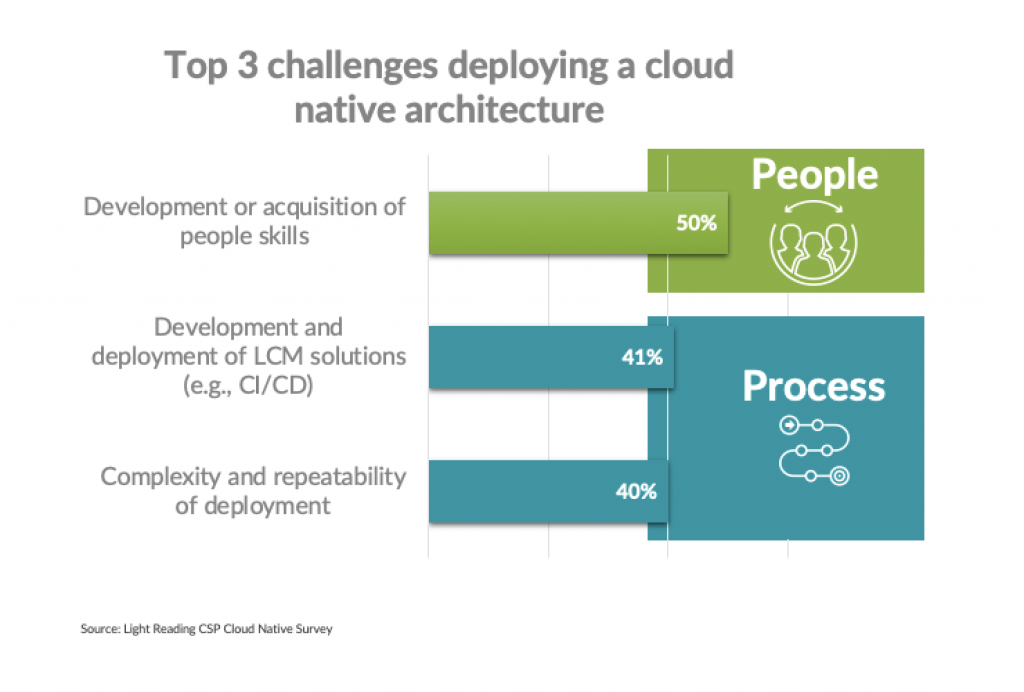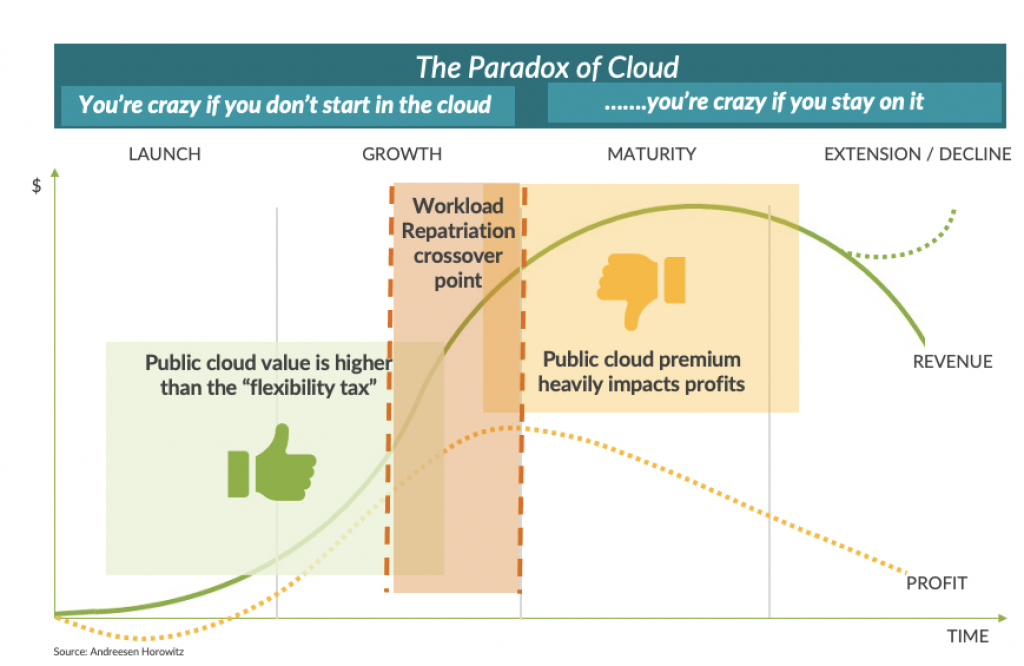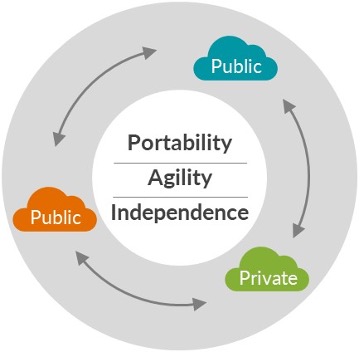This is part four of a five-part series discussing how Juniper Networks is helping communication service providers (CSPs) partner, collaborate and succeed within the public cloud paradigm. See part three here.
According to a Heavy Reading survey of 92 network operators, CSPs rank skills and process gaps as the top challenges when migrating to cloud-native. At a deficit and under time pressure to build the 5G infrastructure, CSPs are aggressively retraining employees, hiring new talent and implementing DevOps automation, but completion could take years. With deployments to thousands of locations or more, CSPs need immediate relief to distribute edge clouds at scale.
Recognizing the opportunity and the potential for disruption, hyperscalers were quick to package their cloud platforms and tools into managed, turn-key edge cloud infrastructure like AWS Outposts, Azure Stack and most recently, Google Distributed Cloud (GDC) Edge. Targeting CSPs as a vertical market, hyperscalers doubled down on their investments, introducing full cloud solutions, like AWS for CSPs, Azure for Operators and Anthos for Telecom, to meet the specific needs of the CSP.
It sounds like the makings of a perfect partnership – the union of the CSPs’ vast edge real estate with the hyperscalers’ managed infrastructure. But hyperscalers are aggressively going after enterprise verticals, a 5G go-to-market strategy shared by CSPs. Hyperscalers have a slight lead, launching specialized services for media, entertainment, finance, healthcare, government and more, putting hyperscalers directly in competition with CSPs.
Wary of the hyperscalers’ deep pockets and, at times, conflicting business ventures, CSPs are proceeding with caution. However, hyperscalers also have compelling lines of business that complement or supplement CSP services like managed infrastructure, analytics, AI/ML, security and more. Together, they can jointly deliver immersive, latency-sensitive applications like AR/VR, connected cars and gaming with application-aware networking for a quality customer experience. Partnerships may also take a more traditional route with hyperscalers hosting CSP OSS/BSS applications within the public cloud.
Regardless of scope, these partnerships are happening across the globe and will continue to evolve throughout and beyond the deployment of 5G.
The paradox of the cloud
You might be wondering, “If public clouds work for some CSP workloads, why not run everything in the public cloud?” An insightful blog by Andreessen Horowitz best describes the paradox of cloud-hosted services: “You’re crazy if you don’t start in the cloud; you’re crazy if you stay on it”.
The paradox states that early in a product’s life cycle, developing and delivering applications or services from a premium public cloud service are economical since market timing and responsiveness are critical to market leadership and customer satisfaction. As services reach maturity, feature sets stabilize and run rates flatten with forecast predictability. The premium for on-demand flexibility is no longer needed, unnecessarily cutting into margin by as much as 80%.
 To preserve margins and improve profitability, mature workloads can be repatriated from public clouds to CSP private clouds. With lower operating costs, private clouds are well suited for mature workloads, freeing up operating budget to reinvest into new services that are likely developed and delivered from the public cloud.
To preserve margins and improve profitability, mature workloads can be repatriated from public clouds to CSP private clouds. With lower operating costs, private clouds are well suited for mature workloads, freeing up operating budget to reinvest into new services that are likely developed and delivered from the public cloud.
Of course, to repatriate workloads, CSPs must first build and operate private clouds (covered in parts one, two and three of this series). Private clouds, which use the same cloud-native, Kubernetes-centric operational model as the public cloud providers, simplify workload portability when moving from public to private and back again, if needed. As the common language, Kubernetes and cloud-native APIs are the foundation of a hybrid-cloud and multicloud ecosystem that equally benefits CSPs, hyperscalers and customers.
Flying the Hybrid Cloud
Revenue and expenses are the primary economic levers of profitability; profits improve by increasing revenues or reducing costs. Through speed, agility, efficiency and a global cloud marketplace, cloud is the path for CSPs to achieve both simultaneously. The catch? Cloud today is not a universal, free-market system where workloads are routinely moved around like money on Wall Street. Cloud-native is the first step towards exchange-like flexibility, shifting workloads based on cost, performance, latency or geography. After all, this is the goal of cloud computing, but we aren’t there yet.
While cloud-native pioneers, hyperscalers wrap their own cloud-native stacks inside high value but proprietary tools and APIs. Moving applications across public clouds requires time-consuming ports (or rewrites) along with training on new tools, processes, and user interfaces. In an ironic twist, placing all workloads into a single hyperscaler cloud results in vendor lock-in as the cost to move from one platform to another may be too costly (sound familiar?).
Multicloud strategies – where CSPs partner with two or more public cloud providers – offer diversity, redundancy and multivendor leverage to negotiate favorable contract terms. However, due to resource commitments and cost, CSPs rarely run the same service across multiple hyperscaler clouds, thereby diluting some flexibility. While the largest CSPs do maintain multicloud relationships, smaller providers may find they lack the personnel or financial resources to diversify.

Based on our experience working with CSPs of all sizes, the most successful CSP cloud deployments use a hybrid cloud strategy to supplement private clouds with public cloud infrastructure and services. Hybrid cloud allows CSPs to develop cloud-native competencies and use the public cloud partnership when advantageous to achieve TTM and scale. With a common Kubernetes framework, CSPs and hyperscalers simplify collaboration, locating workloads based on business value. Hybrid clouds reduce the risk of vendor lock-in, increase service availability and provide competitive leverage if contract terms become unfavorable.
In part five of our blog series, we will describe how Juniper is helping CSPs deploy Kubernetes-native, hybrid clouds.
More Resources
Solutions for Service Providers

























